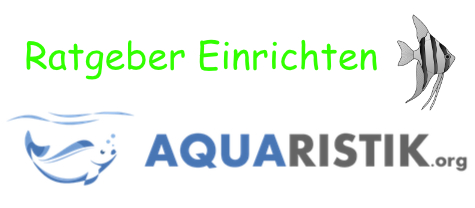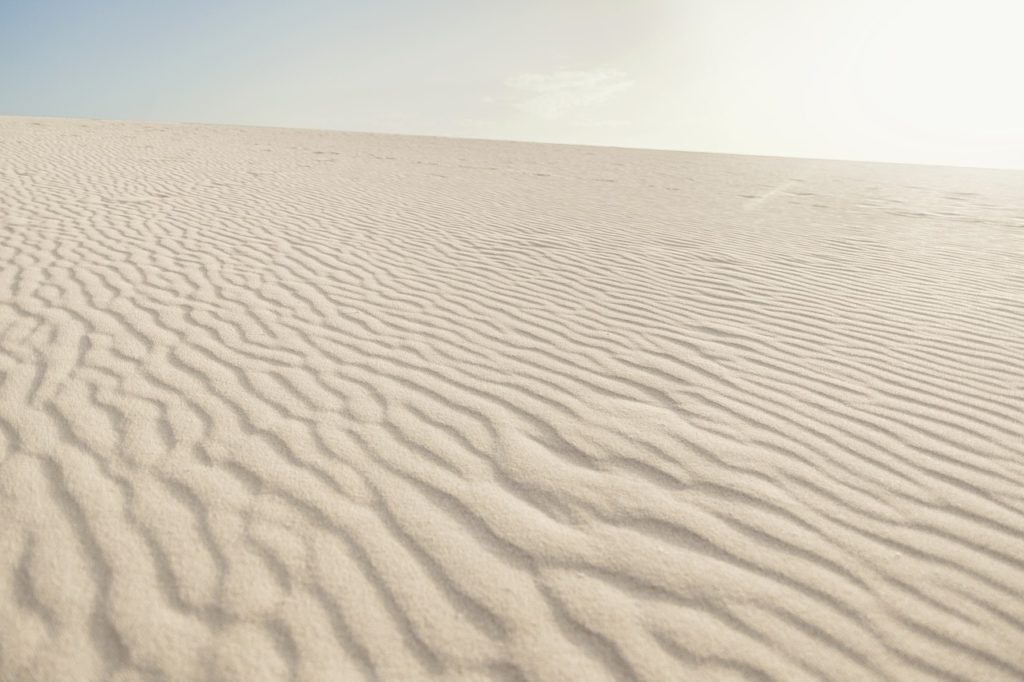Table of Contents

10 steps to set up an aquarium
Setting up the aquarium: As already presented in the first part, the second part is about setting up the aquarium. In addition, we will also explain everything about the actual setup here. There are many tips and tricks in the field of technology. There are a few things to consider here.
The first will be out soon Setup Ebook an aquarium with us. But now enough of the words. We want to start with the detailed planning.
Setting up the aquarium
The time has finally come and we can start setting up our aquarium. The previous parts were only about the preparation, which is particularly important. Mistakes made there are difficult to correct later. Now it's time to set it up. Again, there are a few things to consider here.
Place selection and statics
We briefly touched on this topic in the planning part. The place where the aquarium is located is extremely important. First, let's look at the placement level.
Basically, it shouldn't be too high or too low. We always say that sitting down should be exactly at eye level. On the one hand, this is good for always observing your fish and, on the other hand, it also has advantages when it comes to cleaning. This allows you to get into the water comfortably while standing and you don't always need a chair or a ladder.
There is a special one for statics Find guide with us.
Where should the aquarium be?
Basically in the center of your living. Wherever they are, because an aquarium is not just a container for the fish, it is also a piece of furniture. You should also have a lot of your fish. So it makes little sense to have the pool in the basement. There it will quickly sink into solitude. It is best to look for a place in the living room or in the dining area of your house. There are also said to be aquariums in bedrooms.
Protect your aquarium from direct sunlight
The aquarium should also be protected from direct sunlight. Otherwise algae can form too quickly. Therefore, either this side should be masked or the place should be chosen so that the sun does not shine on the aquarium.
A word about the statics, because as already mentioned you have to be careful here, especially with larger tanks. Do not only count the water, but also the base cabinet, all the technology, the decoration, such as stones, roots and also the sand. This is how you get the full weight. Here, more than 200 kg can quickly accumulate in a 300 liter tank.
Our tip: If you are not sure, then you should ask a structural engineer. Simply acting here can have fatal consequences.
There should also be electricity at the location of the aquarium, because this is also required for all the technology, such as Filter, Heating and Light.
Setting up the pool
The installation is basically quite simple. After everything has been cleaned, the pool is placed either on the base cabinet or on the self-made base. Underneath you should put a special pad. Basically, this is nothing different than a sleeping pad. With many you can also see Styrofoam underlays, although these are no longer beautiful over time.
But there are also pools that stand in frames and do not require a base at all. However, you should have been informed of this either by your specialist dealer or in the operating instructions.
Align the pelvis
You should also align your aquarium correctly. Take a spirit level and see if the base cabinet is sitting correctly in the water. If this is not the case, then readjust. Only then should the pool be placed on it.
This step is also done and it's time to set up the pool. But more on that in our next part.
Set up aquarium setup
In this part we will focus on the setup. However, setting up the aquarium does not mean the installation of the technology, but rather the installation of the floor, decoration and plants. Only then do we deal with the technology and how best to install it. Basically, you should read the next part right away before you start, because certain things can be combined here. Let's start with the underground.
Find decoration examples
Before you even start setting up the decoration and the background, you should know what the pool should look like in the end. So think carefully about where you put what in. You can answer the following questions for yourself. On the one hand, you should ask yourself what should go into the pool. Roots, stones and what else? Or maybe no roots at all? Where do you place these furnishings? In the foreground or in the background? Where do the plants go, or rather where does each plant find its place?
Here are a few more tips that could make such decisions easier for you:
- Get suggestions
- Check out many other aquariums
- Pictures on the internet can help
- Go to the dealer or to the zoo
- Buy books with furnishing examples
- Gather information on Facebook groups and pages
- Watch videos
- attend trade fairs and events
As you can see, there are plenty of ways to find out about an aquarium and how it is set up. Not everything will be possible, but research on the internet alone can help.
Make a sketch of the facility
You should take the time to make a sketch before buying the furnishings. They can also quickly determine the need for plants and stones. Sketch exactly where you want to build something. You should also think about the technology, because you need space for this, especially with an internal filter.
Our tip: The facility should be designed in such a way that as little as possible of the technology can be seen. Hide the heater behind a root. The internal filter goes behind a large plant. Also note that plants need time to grow.
With this sketch you can then determine exactly the need for plants. This gives you a planting plan.
underground in the aquarium
Now we come to the underground of the aquarium. This alone is a science. There are many ways to build it. Basically, this is multi-layered, although we have already had good success in terms of plant growth with a single-layer floor.
Currently, however, the soil is usually made up of a layer of fertilizer and a layer of soil. This special aquarium soil forms the nutrients for the plants. Nevertheless, they shouldn't be disappointed if not all of their plants thrive. It is often also due to the water parameters or the light why it does not work.
The gravel or sand is then placed on the breeding ground for the plants. Again, there are a lot of different colors and grits. From very small with 1 mm to coarse grains.
Attention: Be careful what you want to do with fish in the aquarium later, because the gravel is particularly important for bottom dwellers. This should be sanded and not coarse or even sharp-edged. The catfish and co could injure themselves with it.
As always, there are many opinions about the structure. Get some and then decide for yourself. When it comes to color, you can't always meet the tastes of others here. We personally recommend that you stick to nature and do not use red or blue aquarium substrates.
Attention, of course, the culture medium is not washed. You should also remember that a floodlight has to go into the aquarium now. This is laid under the breeding ground with suction cups like a kind of underfloor heating. But more on that in the section on technology.
Then comes the breeding ground and then the gravel or sand. Proceed carefully here and create enough underground. Don't be stingy here. The manufacturers usually specify a thickness for the culture medium, but it must be 5 cm in any case so that the plants can also find space for their roots there. The gravel where it comes should also have at least another 5 to 10 cm. A little less at the front than at the back.
Arrangement of the decorations
Now a word about the arrangement of the decoration. As already described before, you should make a sketch. But we still want to give a few tips to make an aquarium varied and lively.
- Little gravel in the front and more in the back
- Build terraces out of stones or slabs
- Small plants in the foreground
- Large plants to the rear
- Build a roof with roots
- A cave is liked by many fish
- Alternate with plants
- In large aquariums, areas can be formed
- Create dense planting in alternation with open spaces
- Offer retreats
- Plant them up to the waterline to provide shelter for young animals in some areas
Surely there are a lot more tips, but that gives you a clue as to how you should proceed.
Prepare and plant plants
Let's assume that the ground and subsoil are in there and that they have already placed their roots and stones, as well as steps. Then we come to planting.
Here you can already put some water in the aquarium. But we assume that they already want to plant now.
But the plants have to be prepared first. To do this, wash them off carefully with lukewarm water. With certain types of fish, it is also advisable to first soak them for a few days in order to remove the pollutants. Then you carefully remove the cups if available. Depending on the species, you should read the planting instructions carefully. Foam or cotton should also be removed as much as possible.
In addition, you should remove the withered leaves now. A slight pruning of the roots is also recommended. This usually stimulates growth and the plants grow faster.
Now we come to planting the plants. Basically, they are planted as deep as possible in the ground. Not quite on the glass floor, of course, but close to it. Press them firmly, because later with the water it could happen that they are washed out again.
With certain plants it may also be necessary to tie them down or weigh them down. You can always put some more gravel around the plant to add stability.
You can also add a fertilizer tablet to each plant. This is simply plugged in. This has the advantage that a long-term fertilizer is close to the plant and it thus gets enough iron and co for the first few weeks of growth.
This would also complete the 5th step and we come to step 6 of setting up and using the technology. Only then would we start filling the water.
Setting up an aquarium – technology
Now it goes to Technology what all in a good working Aquarium is needed. So far we have set up the pool and set it up now. But before we get to the step of filling with water, let's take a look at the technology. You can buy a lot of technology in specialist shops, but not everything is needed right away.
But the most important things. In addition to the filter, this also includes the heating and the light is also necessary to have a well-functioning aquarium.
lighting in the aquarium
If you think you can just hang a lamp over your aquarium, you will quickly realize that the plants are not developing well, but the Algae grow quite fast. That's why you should rely on special lighting. In specialist shops you will find everything from small lamps to large fluorescent tubes.
The main thing here is the aquarium. Of course it is not possible if the pool is only 1 meter long and a 1,20 meter fluorescent tube is installed. These must always be selected to match the pool. The right lighting is usually already offered with a set. Factors such as wattage or the type of tubes also play a role here. Basically there is always a slightly darker one for the growth of the plants and then another one that gives a little more light for the well-being of the fish. They also need variety like day and night. A high proportion of red is needed for the plants, because this is the only way for photosynthesis to take place.
Basically, just choosing the right light is difficult for the beginner. That's why we recommend buying a set here. HQI or HQL lamps are usually used in open aquariums. The type of reflector behind the lamp can also be decisive.
In addition to the color of the light, there is also the temperature of the light. This is measured in Kelvin. In a normal aquarium you should reach around 4000 to 6000 Kelvin. This also roughly corresponds to the range of daylight.
light and the lighting time
When it comes to light, the correct lighting duration is also important. This is the only way to achieve good growth. We recommend spending the day in nature. Too much light promotes algae growth and too little light is bad for plant growth. Basically, you can leave the light on for between 10 and 12 hours.
But we have had bad experiences with it. Algae in particular quickly come into their own.
Take a break from the lighting duration. We take a 3-hour lunch break at our aquarium. You can use a timer here. But it shouldn't be completely dark and there should still be some light. But this is usually the case. The duration of the break should also be appropriate. We say if then this break should be at least 2 hours. Less doesn't do much.
This gives you the option of leaving the light on a little longer in the evening when the family is at home.
filters for the water
Now we come to the filtering of the aquarium water. There are also many types of filters and filter media.
- Internal filter: This type of filter sits directly in the pool.
- External filter: Filters that find their place outside of the aquarium.
The assembly is of course also quite different. Basically, the internal filter is quickly assembled and is only glued to the aquarium pane with the help of suction cups. Here, however, you should already know when setting up where this filter is located.
With an external filter, installation is a bit more difficult. Basically there are two things. On the one hand there is a suction pipe, which is connected to the filter with a hose, and then there is also a flushing pipe, where the water returns to the pool after filtering. There are a lot of different outlets here, be it as a large nozzle or with many small nozzles.
Each filter has its advantages and disadvantages, but there are limits to internal filters from a certain size of the pool. There is simply no space for the pump and of course for the filter medium. Then it is time to switch to an external filter.
The filter is of course not controlled by a timer. This always runs. to keep the water moving.
The heater of the aquarium
Now we come to the heating of the aquarium. As a standard, the heating element is conceivable in any size. In the case of very large tanks, there can sometimes be several. These rods are available from small with only 50 watts to large with 300 watts and more. You are simply immersed in the pool and the temperature is adjusted with a screw. However, one should not rely on this scale and therefore a thermostat is required to independently measure the temperature.
Large tanks often also use heaters built directly into the filter. Here you have the advantage of not having any objects with electricity in the aquarium. This method also has advantages in terms of optics.
As already mentioned in the part with the facility, the floodlight must of course already be laid under the floor if you want to use it. We recommend this. We'll talk about the rules below.
fertilization in the aquarium
Let's now come to fertilization and what technical solutions there are that you should already be thinking about. Of course, plant fertilizer can be introduced without any technology. Simply use tablets or liquid fertilizer.
But there are also better and more technical methods. The most common method is the introduction of the fertilizer with the help of Co2. This gas ensures that plants grow better. Here basically only a diffuser has to be in the pool. Through this, the Co2 is dissolved in the water. Basically, the gas bubbles are slowly driven up a spiral, where they gradually dissolve.
Outside the gas is either in a bottle or self-made as a biogas plant. We will show you how this works in a separate article.

Osmosis water not always necessary
An osmosis system can get pretty expensive. On the one hand in the purchase and on the other hand also in operation, because as the specialists already know, you need a lot of water.
The system itself makes soft water out of hard water. Not all fish need soft water. For example, the perch needs rather hard water and the discus rather soft water. You can either ask about the degree of hardness of the water or measure it yourself with certain tests.
As a beginner, you should definitely focus on those fish that can handle a variety of conditions. The purchase of an osmosis system is certainly not a necessity.
control and controls
Regulation for the heating
Let's come to the control and the control of certain functions. The light can be controlled easily with a timer. When it comes to heating, things are different.
Especially if you also operate a floodlight in addition to a heating rod. It is even optimal to lower the temperature at night, because this represents real conditions as in nature. This then requires a controller with a separate temperature sensor, which is only hung in the aquarium from above. The installation in the pool is virtually zero.
The controls are also outside. Floodlights and heating elements are then plugged in there and everything is regulated. This means that the floodlight can also be operated at intervals if you wish.
Regulation for the fertilizer
The fertilizer should also be regulated. With the addition of Co2, you can worsen the water parameters even if you have too much of a good thing. The PH value usually drops as a result. To prevent this, you should regulate it in connection with the addition of Co2 and measure it constantly. Certain probes do exactly that and thus regulate the supply of fertilizer and indirectly also the values of the water. We will also clarify these connections in a separate article. There's a lot of chemistry behind it.
It is up to you whether you want to use such an expensive regulation and control for your first aquarium. It is also cheaper with a time-controlled supply of CO2, whereby the water values have to be checked again and again.
With that we would be done with setting up and installing the technology and it's slowly getting exciting, because now it's the water's turn in the next part.



![BELLALICHT LED timer aquarium lighting - aquarium lamp [RGB white light] with built-in timer dimmer, dimmable 10 brightness levels IP67 waterproof light for fish tank plant, L-93C](https://m.media-amazon.com/images/I/51ivUamkl2L.jpg)


